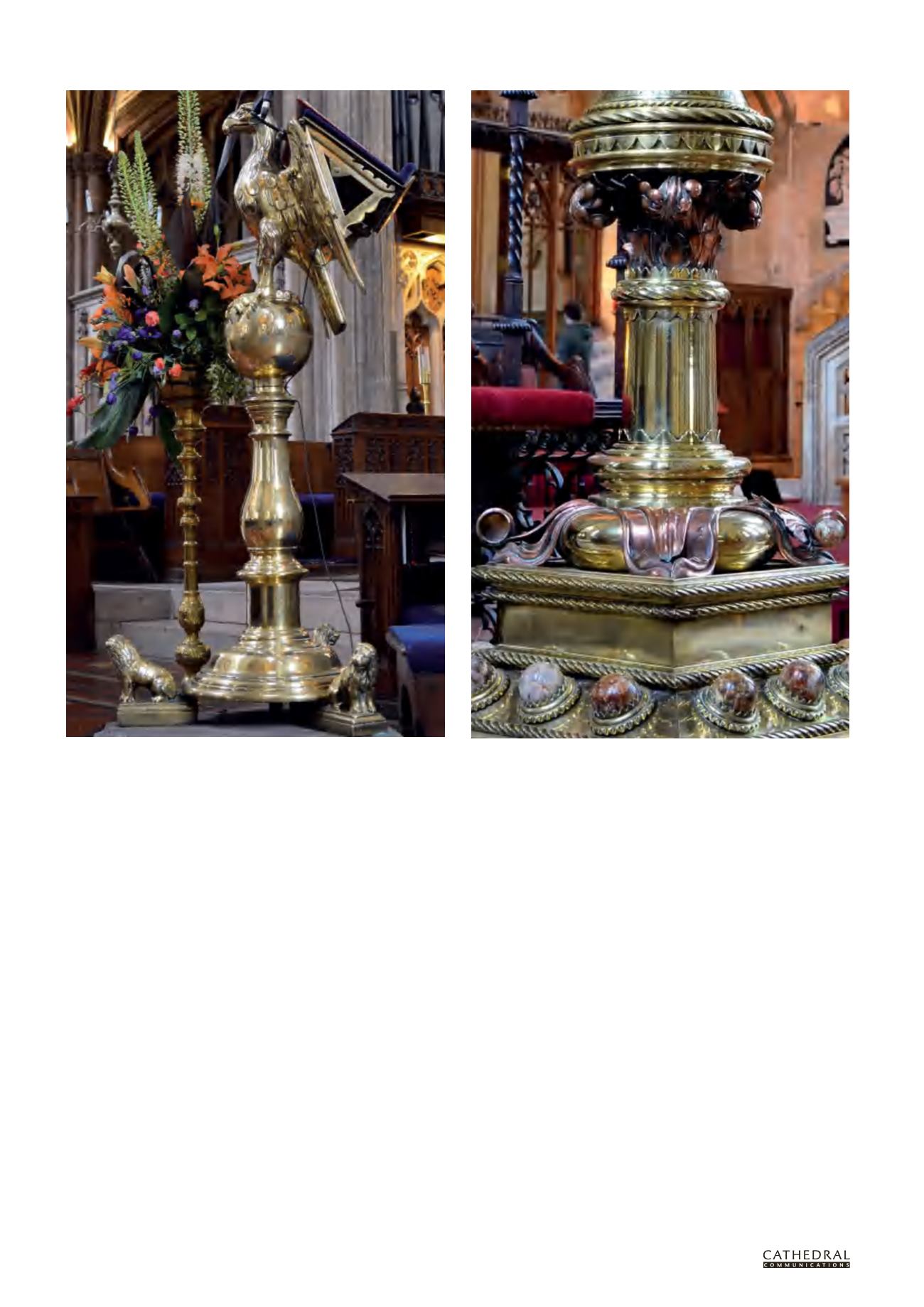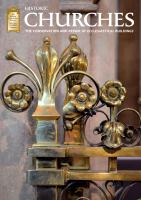

24
BCD SPECIAL REPORT ON
HISTORIC CHURCHES
22
ND ANNUAL EDITION
of the beauty and value of gold with the
durability, workability and lower cost of a
copper-based alloy. However, unlike gold,
it is not inert and it will oxidise slowly if
not protected by wax or lacquer.
Sheet brass is made by hot-rolling
and cold-rolling cakes of alloy until the
desired thickness and size is achieved.
The forging and rolling of brass causes
work-hardening and embrittlement so
the metal has to be annealed in between
working – that is, heated to a temperature
that allows the metal crystals to rearrange
themselves, with the reduction of internal
stresses leading to a softening of the
brass. Repairs to badly damaged sheet
brass artefacts may also require annealing
before the metal can be reshaped.
Brass for casting can contain some
lead as this reduces the melting point and
makes it easier to pour when molten. Lead
has also been added to brass to make it
easier to machine, for example for making
plumbing fittings with screw threads. In
recent years concerns have been raised
about the lead content of brass used for a
variety of items, including pipe fittings, due
to the leaching of lead into drinking water,
and even brass keys due to the potential
transfer of lead out of the metal and onto
skin during handling. Today the amount
of lead allowed in brass for such uses has
been strictly limited in some countries.
However, the author is not aware of
concerns about the lead in items of church
brasswork, presumably because no health
problems have been reported or detected.
Brass is relatively resistant to tarnish,
yet is malleable and easy to work in sheet
form or cast into a mould to make heavier
pieces, and components are easily joined
together by brazing, soldering or riveting.
It also takes well to polishing where the
use of increasingly fine abrasives leads
to the production of a smooth bright
surface. This contrasts with copper and
bronze which have less useful working
characteristics, and which tend to
An eagle lectern in St Mary Redcliffe, Bristol dated 1638 (left) and a detail (right) of the base of a late 19th-century eagle lectern in Bristol Cathedral: the ornate
scroll-work is of copper, which is particularly vulnerable to accidental damage. (Photos: Jonathan Taylor)
tarnish rapidly if cleaned and polished.
Indeed, bronze and copper are normally
deliberately patinated as otherwise the
task of maintaining a bright and attractive
surface would be endless. But brass can be
maintained in a bright state with relatively
little effort if the general conditions in
which it is kept meet reasonable standards.
Coatings should be mentioned as
they can present significant issues. Brass
can be gilded either by oil-gilding (when
gold leaf is applied to the surface with
an adhesive), by mercury-gilding, or by
electroplating. The layers of gold applied
are very thin and can easily be removed by
inappropriate treatment. Brass may also
be protected by a durable lacquer which
will prevent tarnishing, but if the lacquer
is damaged, the exposed area of metal
will tarnish, creating visibly darker areas.
The most problematic items are those
that once had a coat of lacquer which
has been partially removed by cleaning
and polishing efforts, leaving a sort of
















